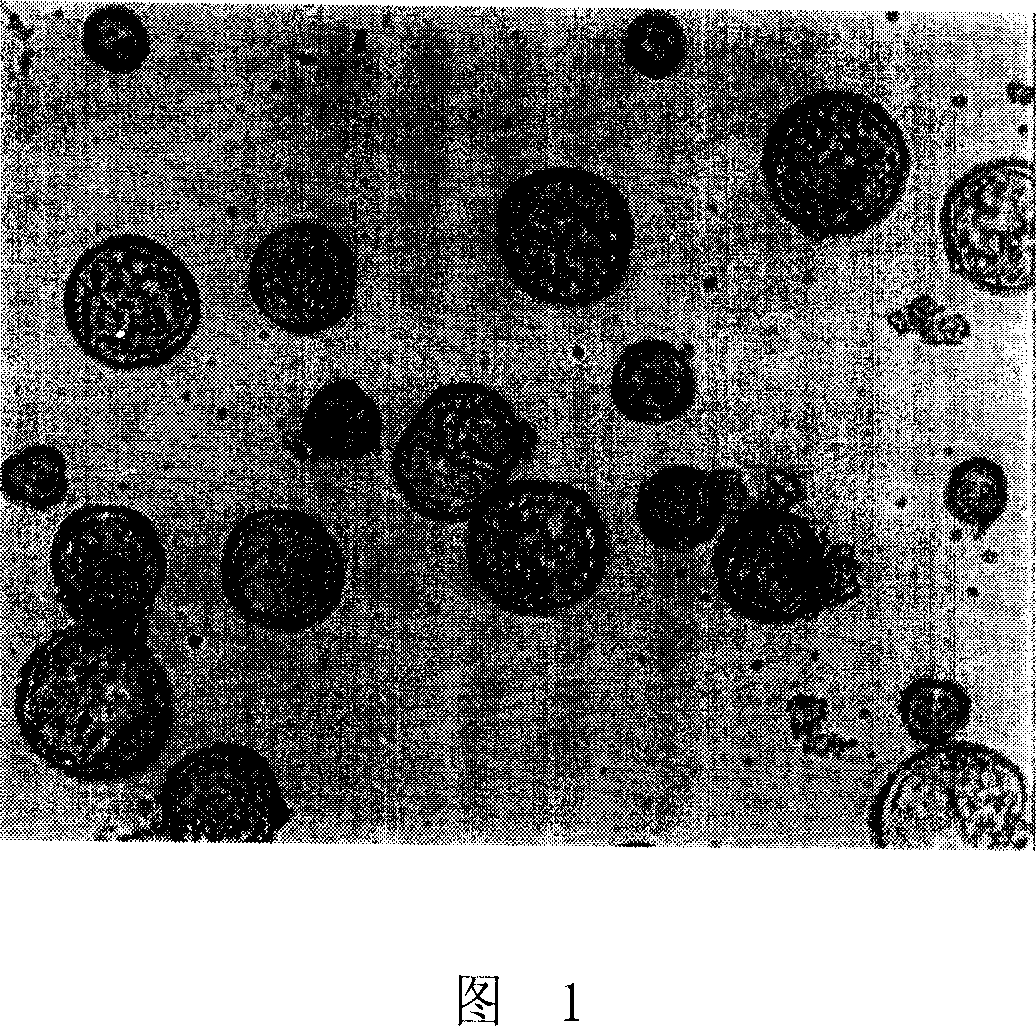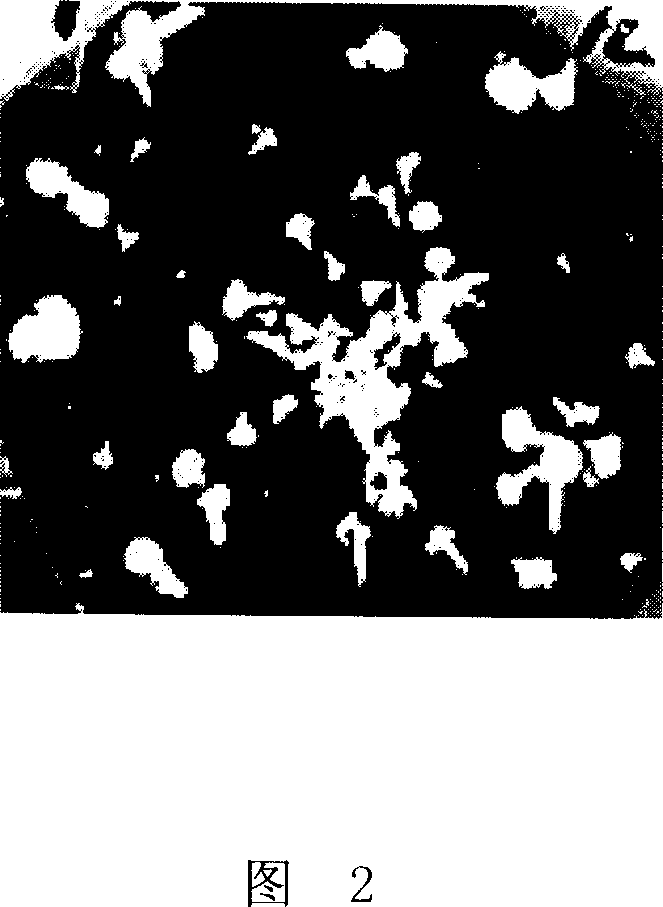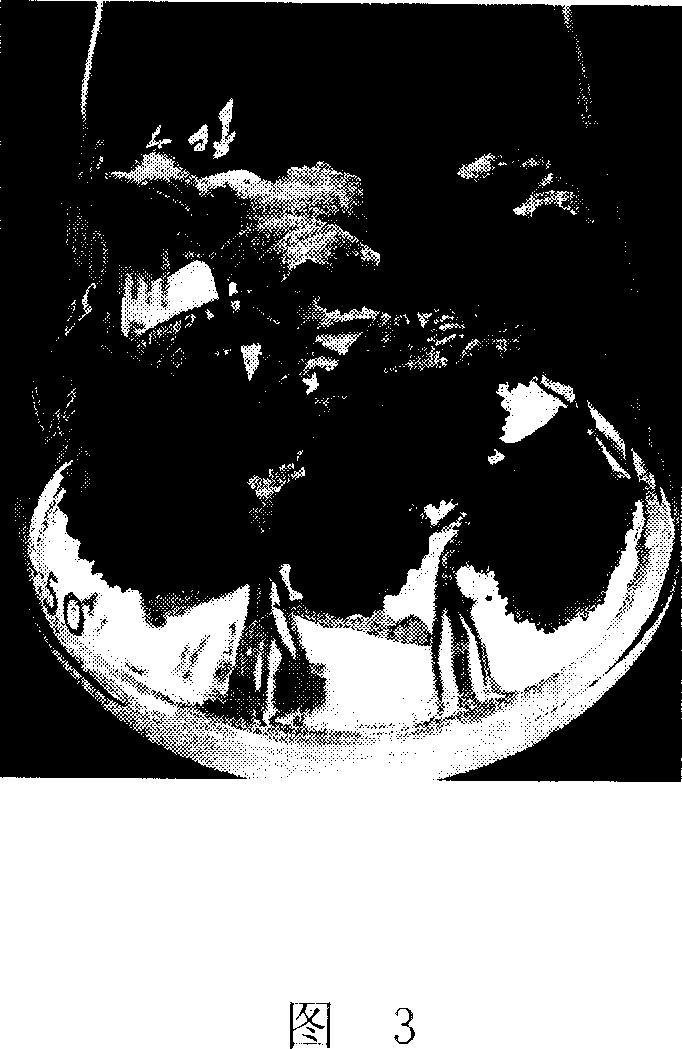Method for obtaining Brassica oleracea var. acephala DC. small spore regenerated plants and special culture medium
A technology for regenerating plants and rooting medium, applied in botany equipment and methods, plant regeneration, horticultural methods, etc., can solve the problems of difficult capture of recessive traits, low efficiency, long time, etc., and achieve wide adaptability and application prospects Broad and high embryo emergence rate
- Summary
- Abstract
- Description
- Claims
- Application Information
AI Technical Summary
Problems solved by technology
Method used
Image
Examples
Embodiment 1
[0028] Embodiment 1, the cultivation of kale microspore regeneration plant
[0029] The donor mother plants of ornamental kale (Brassica oleracea var. acephala) were grown in plastic greenhouses with insect-proof nets. The genotypes covered various types of ornamental kale, and the leaf types included whole round leaves, wavy leaves, crepe leaves, lobed leaves and deeply lobed leaves, etc., the leaf colors include white, light yellow, pink, bright red, purple red, etc., a total of 15 materials, in the first ten days of March to June (Note: During the entire collection season, remove in time Bloom and pod branch and weak branch, guarantee the exuberant growth of new inflorescence) collect microspore and carry out in vitro culture with the method of the present invention, concrete process comprises the following steps:
[0030] 1) Free microspore culture
[0031] DAPI fluorescent staining by nucleus (Colemen A W, Goff L J. Application offluorochrome to pollen biology I. Mithram...
Embodiment 2
[0038] Embodiment 2, the cultivation of kale microspore regeneration plant
[0039] The donor mother plants of ornamental kale (Brassica oleracea var. acephala) were grown in plastic greenhouses with insect-proof nets. The genotypes covered various types of ornamental kale, and the leaf types included whole round leaves, wavy Leaves, crepe leaves, lobed leaves and deeply lobed leaves, etc., leaf color includes white, pink, scarlet, purple red and light yellow, etc., a total of 16 parts of materials, collected microspores in the first ten days of March to June and carried out in vitro with the method of the present invention Cultivation, the specific process includes the following steps:
[0040] 1) Free microspore culture
[0041] Through the DAPI fluorescent staining of the nucleus, microscopic examination, determine the development period of the microspore, get the flower bud containing 80% mononuclear marginal stage microspore cell and 20% binucleate stage cell, the flower...
PUM
 Login to View More
Login to View More Abstract
Description
Claims
Application Information
 Login to View More
Login to View More - R&D
- Intellectual Property
- Life Sciences
- Materials
- Tech Scout
- Unparalleled Data Quality
- Higher Quality Content
- 60% Fewer Hallucinations
Browse by: Latest US Patents, China's latest patents, Technical Efficacy Thesaurus, Application Domain, Technology Topic, Popular Technical Reports.
© 2025 PatSnap. All rights reserved.Legal|Privacy policy|Modern Slavery Act Transparency Statement|Sitemap|About US| Contact US: help@patsnap.com



